“Train, train, comin’ down, down the line
Train, train, comin’ down, down the line
Well, it’s bringin’ my baby ’cause she’s mine, all mine” – Mystery Train (Herman Parker Jr. / Sam Phillips) © Sony/ATV Music
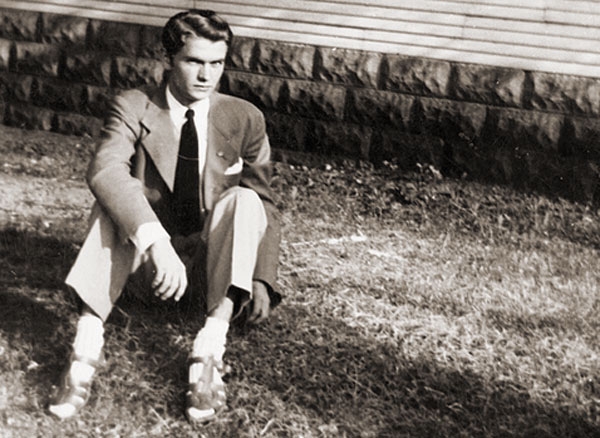
Born on his parents’ 200-acre farm near Florence, Alabama, the youngest of eight children, Sam Phillips was no stranger to hard work. Though his parents owned their farm, it was heavily mortgaged, and everyone in the family was expected to do their share to keep the enterprise solvent. It was in the fields that young Sam was first exposed to the work songs of the black laborers, leaving a lasting impression on his mind.
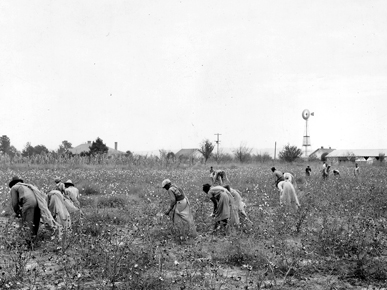
Music was always a part of Sam’s life. He played sousaphone, trombone and drums in high school, where he conducted the school’s marching band; yet he never imagined that music would be his vocation. He has been quoted as saying that as a youth he desired to be a criminal defense lawyer, “because I saw so many people, especially black people, railroaded”.
A defining moment in Phillip’s life came in 1939 when the family was traveling together to Dallas and made a stop in Memphis. Arriving in the middle of the night, in a pouring rain, 16-year-old Sam was able to sneak away to Beale Street, where he was captivated by the lights and music, finding the street alive with people. It was this experience that would prove to be a foreshadowing of his life’s work.

Beale Street yesterday . . . 
. . . and today
Bankrupted by the Great Depression, Sam Phillip’s father died in 1941, forcing Sam to leave school to care for his mother and aunt. He worked a succession of jobs, including as a disc jockey at radio station WLAY in Muscle Shoals, Alabama, where he met his future wife, Rebecca Burns. Sam married “Becky” in 1943 – a union that would produce two children – and remained married for 60 years, until his death in 2003.
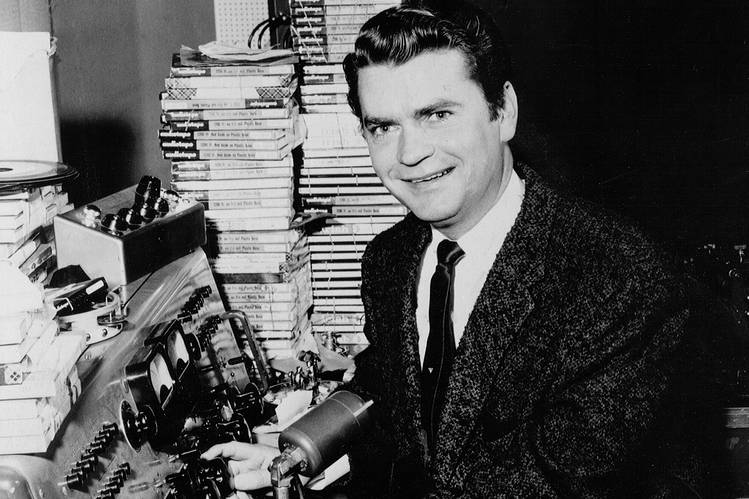
The impression that Memphis had left upon Phillips as a teenager would eventually draw him and his wife to the city in the mid-1940s, where he would spend four years working as an announcer and sound engineer at radio station WREC. It was there that Sam began experimenting with microphone placement and other new recording techniques to enhance the sound of live performances that the station would record for future broadcast. This experience would prove consequential in Sam’s future recording endeavors.
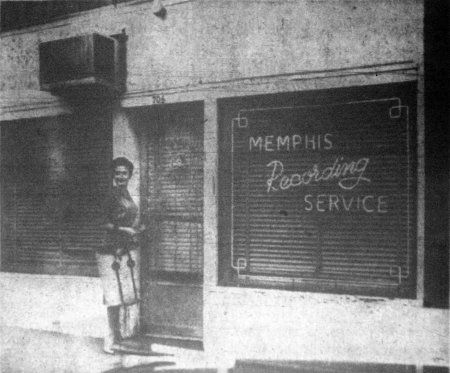
On January 3, 1950, Sam Phillips opened the Memphis Recording Service in a former auto repair shop located at 706 Union Ave. Getting started was a challenge for the aspiring entrepreneur, and to bring in business he was known to record conventions, weddings, choirs, funerals, or anything else that created revenue. He operated the venture with an open door policy, allowing anyone to, for a small fee, make their own record. The studio’s slogan was, “We Record Anything, Anywhere, Anytime.”

B. B. King 
Junior Parker 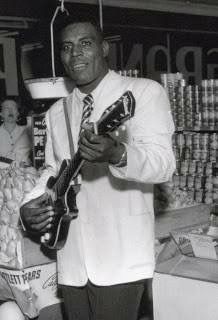
Howlin’ Wolf
His willingness to work with amateurs enabled Phillips to make the first recordings of artists such as B. B. King, Junior Parker and Howlin’ Wolf. While he recorded many different styles of music, his first love was the blues. He was quoted as saying, “The blues, it got people—black and white—to think about life, how difficult, yet also how good it can be. They would sing about it; they would pray about it; they would preach about it. This is how they relieved the burden of what existed day in and day out.”
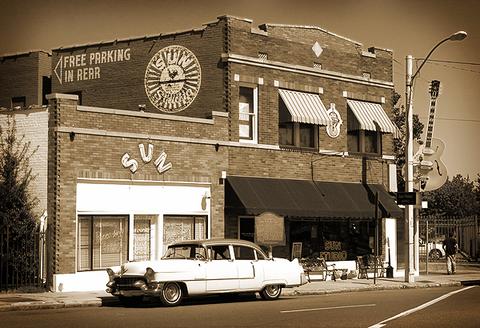
At the time, recordings by black artists had only recently begun being referred to as “rhythm & blues” releases, as opposed to “race” records, and while there were some artists who were known for their ability to cross over to the pop charts, it was more common for white artists to record their own versions of black hits. Sam Phillips felt that this practice left most of the songs sounding bland and watered down.
Marion Keisker, Phillips’ receptionist stated, “Over and over I remember Sam saying, ‘If I could find a white man who had the Negro sound and the Negro feel, I could make a billion dollars.'” In his book, Sam Phillips: The Man Who Invented Rock ‘N’ Roll, author Peter
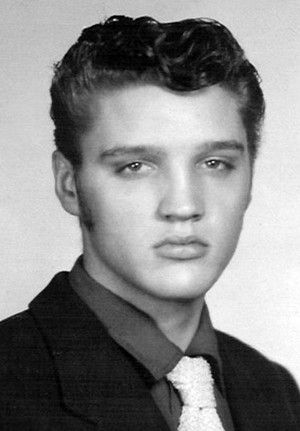
That day finally arrived for Phillips in 1953, when a young Elvis Presley – barely eighteen years old – walked through the doors of Memphis Recording Service, ready to pay his four dollars to record a song or two for his mother. Phillips saw (and heard) in Presley, exactly what he had been searching for. Elvis was listening to all the stuff that Phillips was recording: B. B. King, Howlin’ Wolf, Ike Turner; and he believed that with a little coaching Elvis could be that crossover artist who could bring African-American music to a white audience. Signing Elvis Presley to a recording contract for his Sun Records label, Phillips cut a number of sides for the singer during the period 1954 -55, one of those tracks being “Mystery Train”, which was originally released as the “B” side of Elvis’ version of “I Forgot to Remember to Forget”.
“Train I ride, sixteen coaches long
Well, that long black train got my baby and gone” – Mystery Train
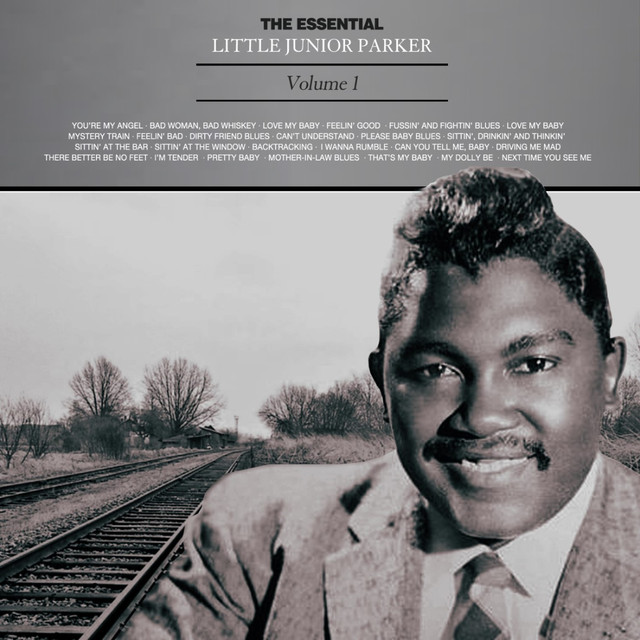
Written by Junior Parker, “Mystery Train” had been recorded & produced by Sam Phillips in 1953, and released by Sun Records as a single for Little Junior’s Blue Flames. Performed by Parker in the style of a rhythm & blues number, the song featured lyrics similar to those found in the Carter Family’s “Worried Man Blues”, which was based on an old Celtic ballad.

Sam Phillips, Elvis, Marion Keisker 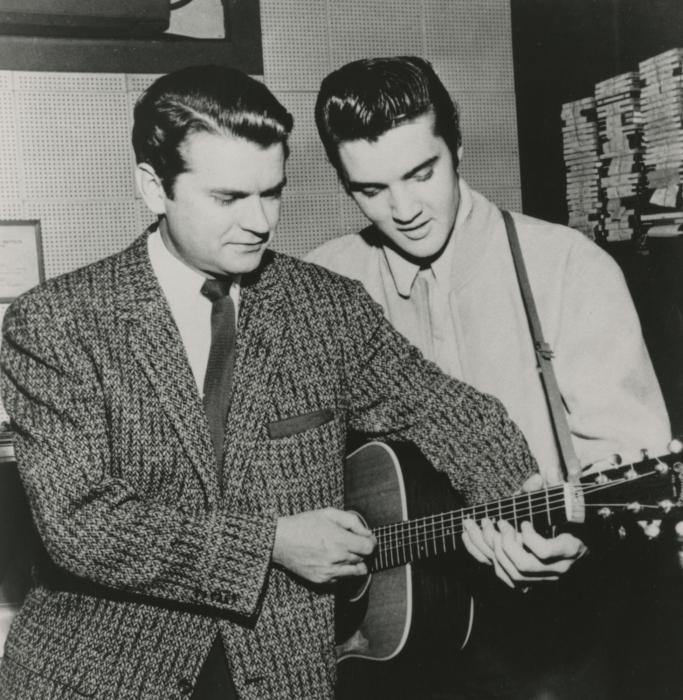
Sam & Elvis
Presley’s Sun Records recording of “Mystery Train” – featuring Elvis on vocals & rhythm guitar, Scotty Moore on lead guitar, and Bill Black on bass – went on to become an early rockabilly standard, with Moore claiming to have borrowed the guitar riff from Junior Parker’s “Love My Baby” (the “B” side to Parker’s recording of “Mystery Train”).
Having acquired the song with the purchase of Presley’s contract, RCA Victor re-released the recording in November of 1955, when it peaked at number 11 on Billboard’s Country Chart, making Elvis a nationally-known country music star. Now considered an “enduring classic”, the song has been ranked by Rolling Stone Magazine at #77 on its list of the 500 Greatest Songs of All Time; ranked the third most acclaimed song of 1955, by Acclaimed Music; inspired Jim Jarmusch’s 1989 independent film Mystery Train, as well as Greil Marcus’ widely lauded book Mystery Train: Images of America in Rock ‘n’ Roll Music.
Note: In 1986 Sam Phillips was part of the first group inducted into the Rock and Roll Hall of Fame, and his pioneering contribution to the genre has been recognized by the Rockabilly Hall of Fame. He was the first non-performer inducted. In 1987, he was inducted into the Alabama Music Hall of Fame. He received a Grammy Trustees Award for lifetime achievement in 1991. In 1998, he was inducted into the Blues Hall of Fame; in October 2001 he was inducted into the Country Music Hall of Fame; and in 2012 he was inducted into the inaugural class of the Memphis Music Hall of Fame.

“Train, train, comin’ ‘round the bend
Train, train, comin’ ‘round the bend
Well, it took my baby, but it never will again . . .” – Mystery Train
Sources:
https://en.wikipedia.org/wiki/Mystery_Train
https://en.wikipedia.org/wiki/Sam_Phillips
https://www.popularmechanics.com/culture/music/a22237/sam-phillips-sun-studio/
All photos sourced from internet searches, none belong to the author.
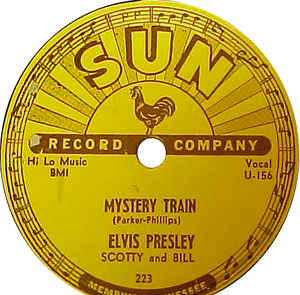
Awesome blog! I think music is one of America’s greatest contributions to world culture. Thanks for telling these stories.
Kristin, thanks for reading and thanks for the kind words. I am really enjoying the storytelling.
Hi! I simply want to offer you a big thumbs up for the
great information you’ve got here on this post.
I’ll be returning to your web site for more soon.
Great post! Im surely sharing this with my friends! Had fun reading it indeed.